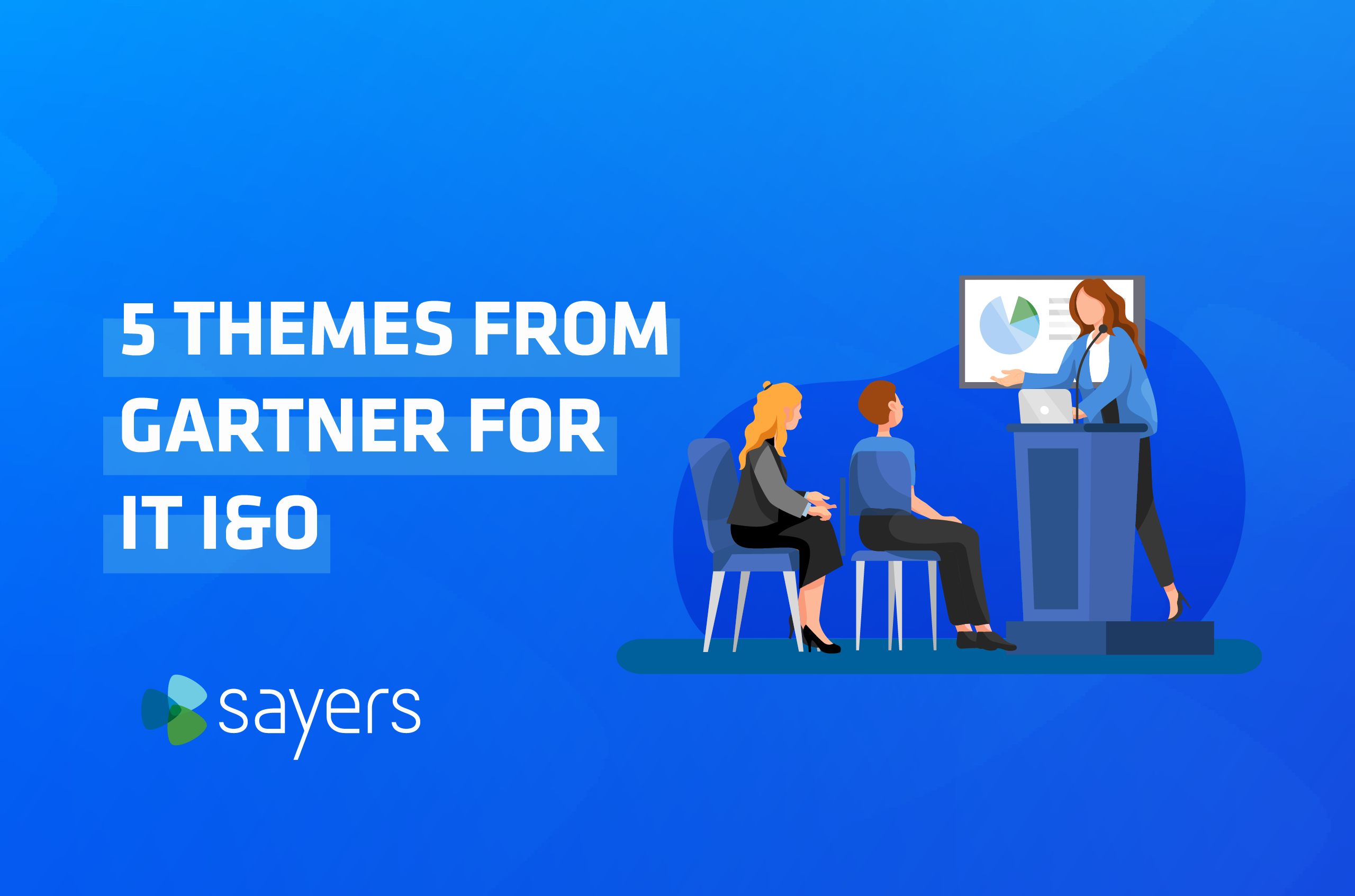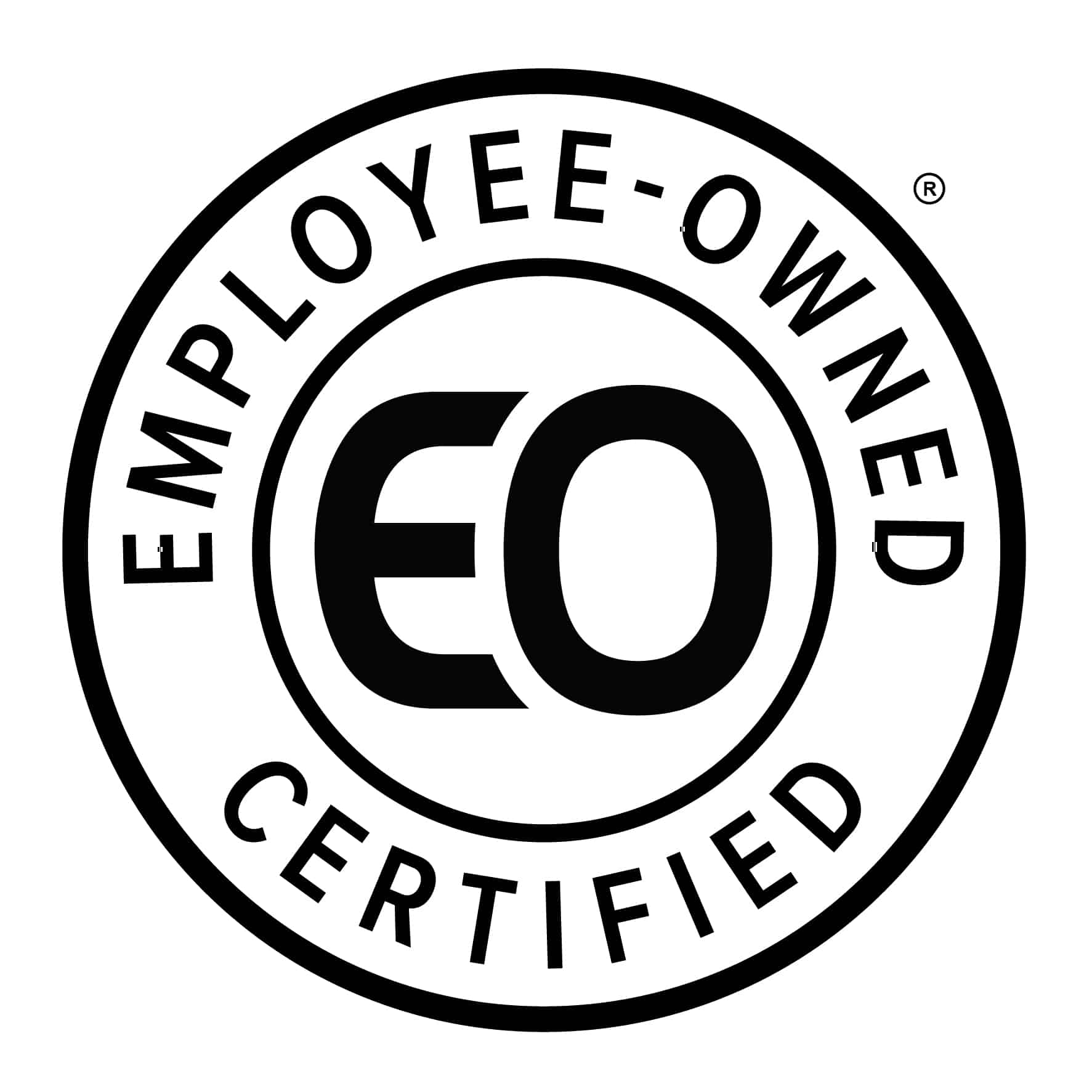Five Themes From Gartner Conference For IT Infrastructure And Operations
Posted February 20, 2025 by Sayers

For today’s IT infrastructure and operations teams, delivering scalable, agile, and resilient platforms is only part of the job description. They’re also delivering innovation while doing more with fewer resources, which makes cost-efficiency and time-saving technologies essential.
The recent Gartner IT Infrastructure, Operations, and Cloud Strategies Conference in Las Vegas drew more than 4,000 I&O leaders to dive deep into technologies and strategies. Sayers was there, capturing five key themes from the three-day conference: AI, cyber resiliency, platform engineering, hybrid cloud, and enterprise virtualization options.
Here’s what those mean for organizations like yours.
1. AI Will Be Foundational For Next-Generation IT Operations.
From its opening keynote, the Gartner conference raised the call to IT infrastructure and operations leaders to ready their teams for an AI-augmented future where intelligent infrastructure is everywhere.
I&O leaders have been preparing, according to the 2024 Gartner I&O Signature Role Survey:
87% of I&O organizations are currently investing in Generative AI or plan to invest within the next 12 months.
Most of their current focus is on “everyday AI” use cases with an achievable return on investment. These range from service desk chatbots and coding assistants, to summarizing documents and meetings and analyzing patch deployments.
Gartner predicts:
By 2027, more than 40% of the tasks performed in I&O will be augmented by generative AI, up from less than 5% in 2024.
As your organization moves into Generative AI and explores IT I&O management use cases, consider how you are securing your GenAI data and managing governance.
Mark McCully, Director of Modern Data Center Engineering at Sayers, says:
“Many of our customers are starting their GenAI investments in the cloud, bringing portions of their data into existing large language models such as Microsoft 365 Copilot and Azure AI Foundry. They’re using public cloud compute for data mining, essentially buying rather than building their own AI at this point.”
Organizations looking for AI-ready infrastructure options have several choices. Dell, HPE, NVIDIA, and Pure Storage offer reference architectures in consumption-based, right-sized options (small/medium/large) for the compute and storage needs of GenAI workloads that allow companies to “pay as you grow”. These platforms, such as HPE’s Private Cloud for AI, allow organizations to get GenAI infrastructure up and running very quickly and also free up valuable engineering resources because all of the hardware and software maintenance is handled by the OEM.
2. Cyber Resiliency Helps You Recover More Quickly After An Attack.
A surge in ransomware and other cybersecurity incidents made cyber resiliency a hot topic at the Gartner conference. Gartner reported 75% of companies polled had experienced at least one cyber event the prior year and that number is set to increase with threat actors leveraging GenAI and Deepfake technologies in their hacking toolkits going forward.
The cost of cyberattacks to organizations is also rising, with an average cost of $5.13 million to rectify the impact of a ransomware attack in 2024. That cost includes not only the actual ransom that was paid out, but also the impact to the business in terms of downtime, lost revenue, data recovery and people time. That amount does not necessarily include the impact to a business’s reputation and customer satisfaction which can be even more impactful than the initial financial hit.
Protecting your data and quickly recovering after a cyberattack are equally important. Modern data protection and cyber resiliency solutions include threat hunting, data security, clean room data recovery in an isolated environment, and incident response capabilities.
McCully says:
“Companies are increasingly looking into backup-as-a-service and disaster recovery-as-a-service to manage risks to their cyber resources. Vendors such as Rubrik, Veeam, Commvault, and Cohesity are making this more consumable so you can use a BaaS model in the public cloud. With BaaS and DRaaS offerings, you can more easily protect cloud-based workloads and use cost-effective public cloud for isolated recovery environments.”
Up-and-coming resiliency options such as cyberstorage can detect and shut down ransomware on the front end at the user and file-share level.
In developing your cyber resiliency plan, consider:
- Do you have a secure and thoroughly tested ransomware / cyber-recovery plan – one that focuses on backing up data as well as recovering clean data at scale?
- Do you have an air-gapped backup environment?
- Do you have an isolated recovery environment to recover clean data?
- Do you have BaaS and DRaaS? Even if your data center is on-premise, you might want to use the public cloud for testing and cost-effective disaster recovery.
- Are you backing up SaaS data in Microsoft 365, Salesforce, Microsoft Entra ID, and Jira?
- Are you using a cyberstorage product to detect ransomware and protect your data?
3. Combine Infrastructure Platform Engineering And Site Reliability Engineering For Adaptive, Self-Service Infrastructure.
Infrastructure platform engineering (IPE) continues to be a key theme at the Gartner I&O conferences. IPE focuses on delivering software applications more quickly and reliably, incorporating key tenants such as automation, observability, portability, and self-service into your IT infrastructure.
According to Gartner:
By 2027, 70% of I&O leaders who fail to transform their teams to an infrastructure platform engineering delivery model will be managing only legacy infrastructure services.
Gartner’s recent I&O conference in Las Vegas expanded on IPE, focusing on delivering products, solutions, and infrastructure from both a platform engineering and a site reliability engineering (SRE) standpoint. Gartner defines SRE as a discipline that combines systems, reliability, and software engineering principles to design and operate scalable resilient systems.
Legacy infrastructure provisioning approaches fall short, compared to the combination of IPE and SRE that upgrades infrastructure practices to self-service models. McCully says:
“IPE and SRE are frameworks that combine agility and resilience to allow developers and business teams access to infrastructure resources on-demand in a secure, stable, and repeatable manner. In this type of self-service model, developers can go to a portal and build the infrastructure they want, whether it’s infrastructure as code, containerization, etc.”
4. Hybrid Cloud Is The Future For Enterprise Workloads.
Public cloud growth remains strong, but don’t expect private data centers to become obsolete. Organizations are increasingly moving toward hybrid cloud, with data dispersed across the edge, cloud, on-premise, and the Internet of Things.
Unstructured data will grow as AI use cases push more data and compute resources to the edge for processing outside of the data center or cloud.
McCully says:
“More companies are adopting multi-cloud strategies while keeping some applications on-premise. Whether it’s a cost or latency consideration, they’re putting their workloads where they need to be: right workload, right place, right time, for the right reason.”
Factors slowing cloud migration include the cost of cloud management and the technical debt of older operating systems, servers, and networking gear. According to the 2024 Gartner CIO Effectiveness Survey:
57% of CIOs say their IT organization is not effective at managing technical debt.
Companies that have been in the cloud for several years are scrutinizing their bills and looking for ways to lower their cloud storage costs. Data reduction tools such as Pure Storage’s Cloud Block Store can help fine-tune their cloud spending.
Compute and storage service platforms such as HPE GreenLake and Dell APEX use consumption-based models, and you can leave the administration to Dell or HP to free up your resources.
5. You Have More Enterprise Virtualization Alternatives To Broadcom VMware.
Broadcom’s acquisition of VMware and subsequent price increases have left many I&O teams looking for alternative virtualization enterprise platforms for managing virtual machines and virtual desktops.
Organizations are seeing average cost increases of two to four times when moving to the Broadcom VMware subscription-based model. There’s still no one-for-one alternative to VMware, but choices include:
- Nutanix Cloud Platform (a strong option if you already need a hardware refresh)
- Public Infrastructure as a Service (lift and shift)
- Microsoft Azure Stack HCI (now part of Azure Local)
- Microsoft Hyper-V native hypervisor
- Red Hat OpenShift Virtualization
- Azure Virtual Desktop service as an alternative to Horizon virtual desktop
McCully says:
“Sayers can analyze and forecast your costs based on Broadcom VMware’s new subscription-based licensing and help you navigate alternative options.”
Questions? Contact us at Sayers today to discover extensive technology solutions, services, and expertise to cover all areas of your business.


